Basics of Good Quilting Design from All Things Quilting with Alex Anderson
Mar 12th 2020
The content below is from All Things Quilting with Alex Anderson— learn the basics of good quilting design! P.S. Scroll to the bottom of the post for a giveaway.
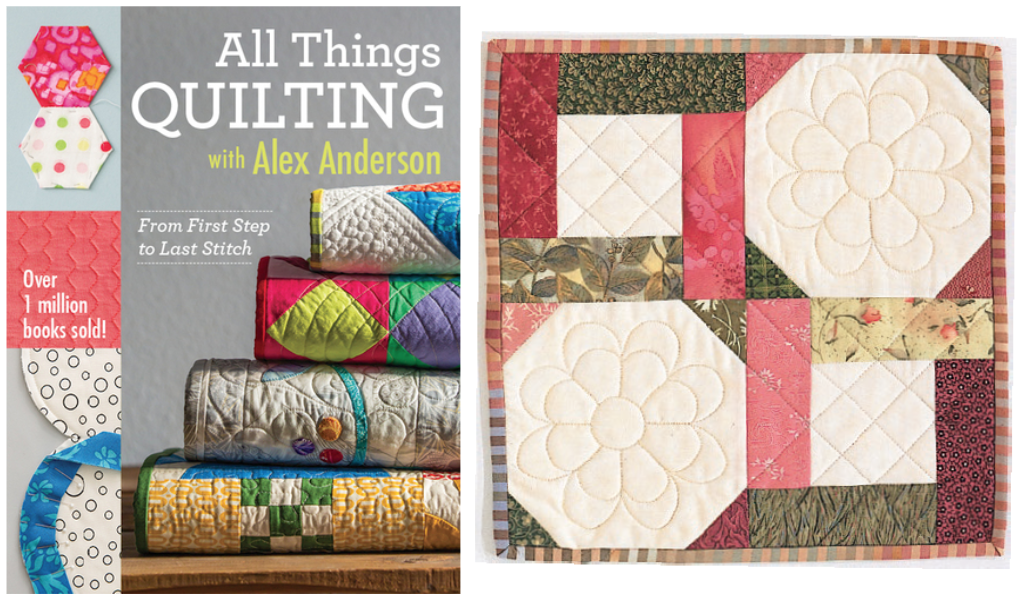
How do you evaluate what approach is best for your quilt? Here are some basic guidelines that will get you off to a good start.
How and by whom will the quilt be used?
Is this quilt intended largely for show or to be cherished as a future family heirloom? If so, by all means, pull out the stops and go for your fanciest, most lush quilting. If this is a quilt that the kids are going to drag around or is destined for a bed that the dogs jump on, however, you’ll probably want to keep the quilting fairly simple.
Fill the space.
Just as you wouldn’t want to jam a huge house on a postage-stamp-sized lot, you’ll want to make sure that the amount of quilting in your plan is appropriate for the area of the quilt that you’re aiming to fill. Not enough quilting, and the space looks awkward and empty, as though you underplanned, became bored, or ran out of time and energy. Too much quilting, and the piece can look cramped; instead of enhancing the space, the quantity of stitching overwhelms it.
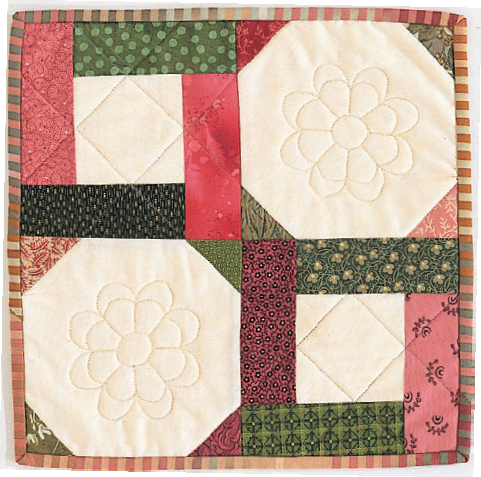
The floral motif here is too small for the space.
If you’re choosing a quilting motif for a specific area or block, a good rule of thumb is to select a design that comes within 1/4˝ of the seams. If you find a motif that you absolutely love but that’s either too large or too small, you can reduce or enlarge it on most copy machines.
Distribute quilting evenly over the entire surface of the quilt.
If you fill some areas of your quilt top—for example, the blocks—with heavy quilting and then skimp on other areas, such as sashing or borders, your finished quilt will look unbalanced, be inclined to sag unattractively in the underquilted spots, and pucker where the sparsely and densely quilted areas meet. Think balance.
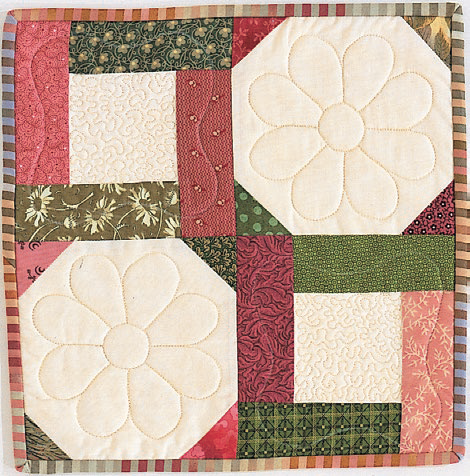
Uneven amount of quilting.
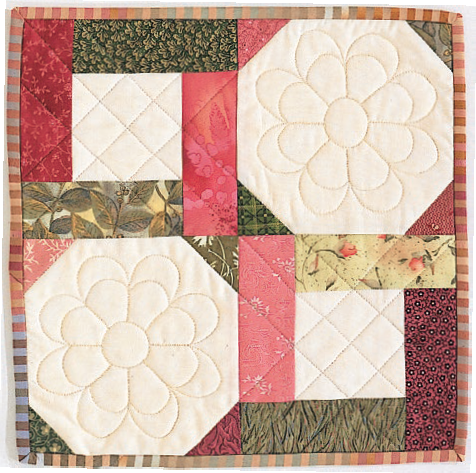
Consistent amount of quilting.
Mix curves with geometry and geometry with curves.
There’s a reason so many lovely old appliqué quilts feature heavily gridded backgrounds. Those straight lines not only fill in the block backgrounds, but they also make a nice visual counterpoint to the curvy, organic appliqué shapes.
The same holds true for the opposite: gently curved fans, feathers, and cables soften the straight lines and sharp angles of many of our favorite geometric blocks. In other words, embrace the contrast.
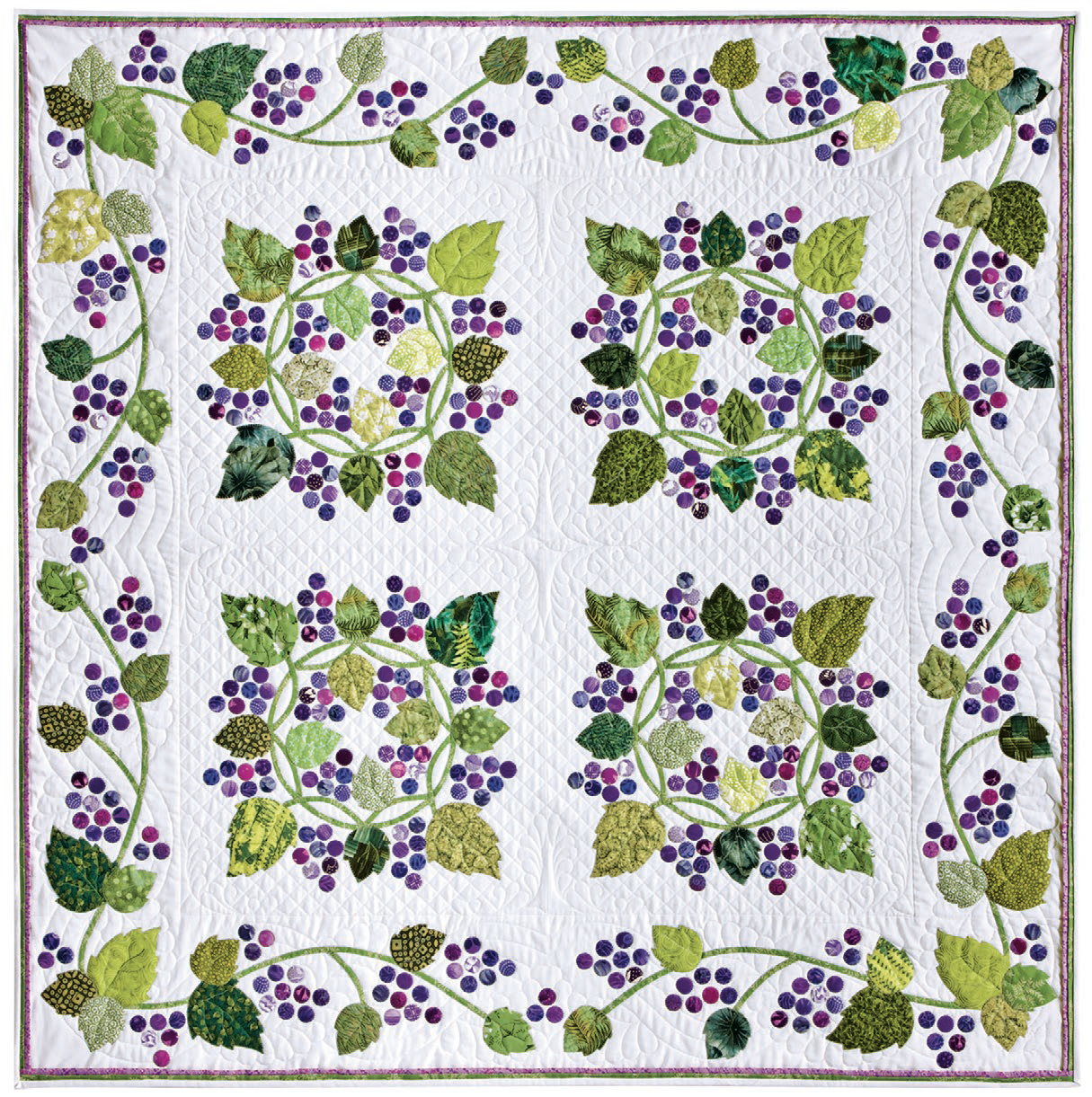
Grape Escape
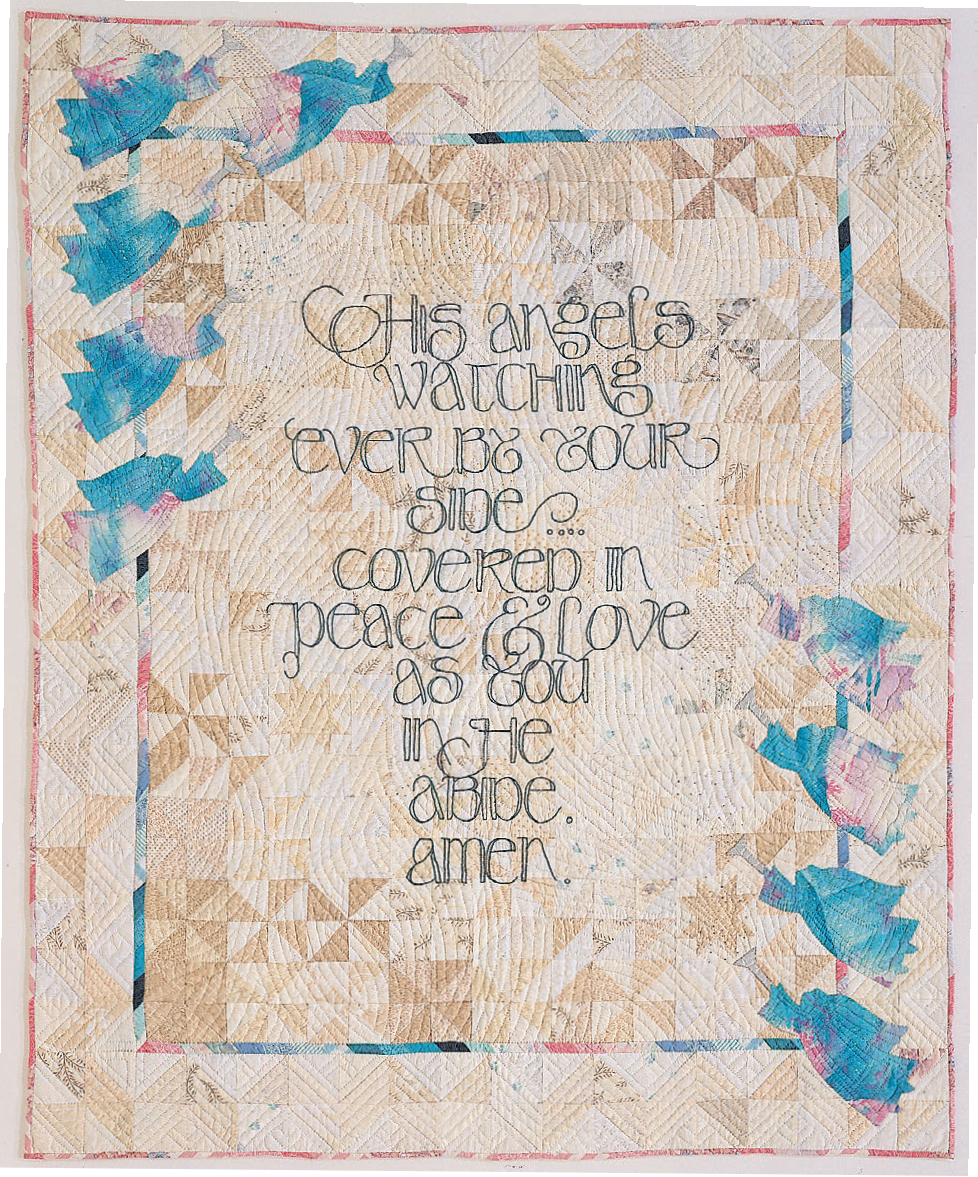
Angel Quilt
Don’t be afraid to cross the lines.
When it comes to quilting designs, seamlines can become arbitrary. Rather than looking at each block as a series of geometric shapes and isolating each shape with quilting, try the “big picture” approach. Consider the whole block as a single design surface. Are there any adjacent shapes that you can highlight with a single quilting motif? What if you were to quilt a wreath or feathered heart over an entire pieced block? Can secondary designs, created where blocks meet, be emphasized by motifs that overlap the block boundaries? It’s okay for quilting motifs to cross the lines between blocks and sashing or the quilt center and borders.
Reserve elaborate quilting for areas where it can be seen.
If your quilt features especially intricate piecing or areas with highly patterned (busy) fabrics, it’s pretty unlikely that your quilting motifs will show to their best advantage. Save those fancy wreaths, feathers, and other elaborate quilting designs for solids, tone-on-tones, and lightly patterned prints, as well as for filling the more open areas on your quilt—such as plain alternate blocks or sashing. That way, every beautiful stitch will be seen. For densely pieced or printed areas, keep it simple.
TROUBLESHOOTING: QUILTING BUSY FABRICS
If your border fabric is so highly patterned that it will disguise elaborate quilting, try one of the following:
Follow the pattern printed on the fabric with your quilting. This adds texture without adding additional pattern. Just be sure that the density of the quilting remains consistent.
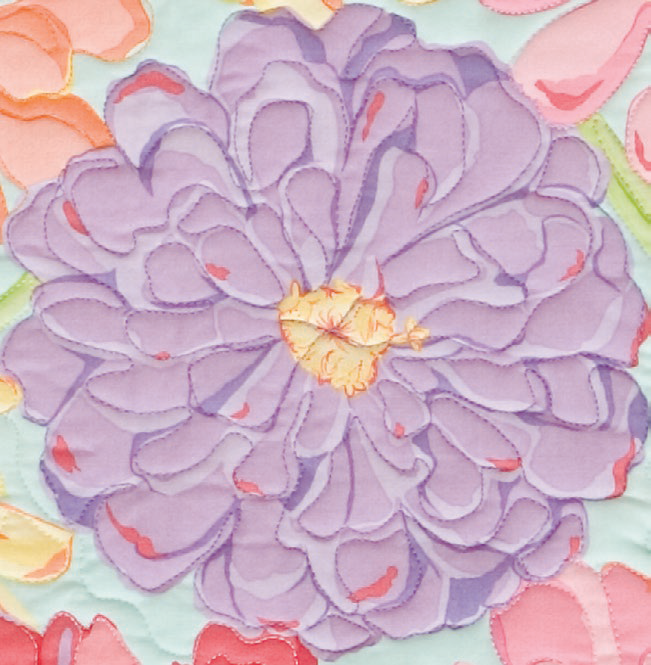
Follow the pattern on busy fabric.
Choose a familiar motif, such as a cable or fan. The repetitive pattern is easily recognized, so the brain fills in the blanks.
Try quilting with a thread in a highly contrasting color. Sometimes that’s all you need for the quilting to shine.
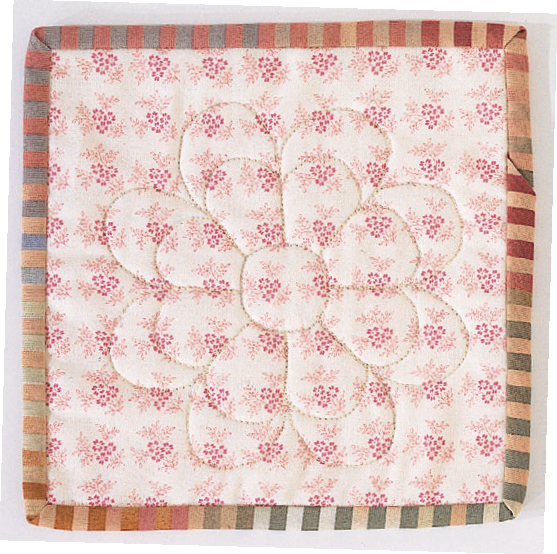
Quilting with white thread.
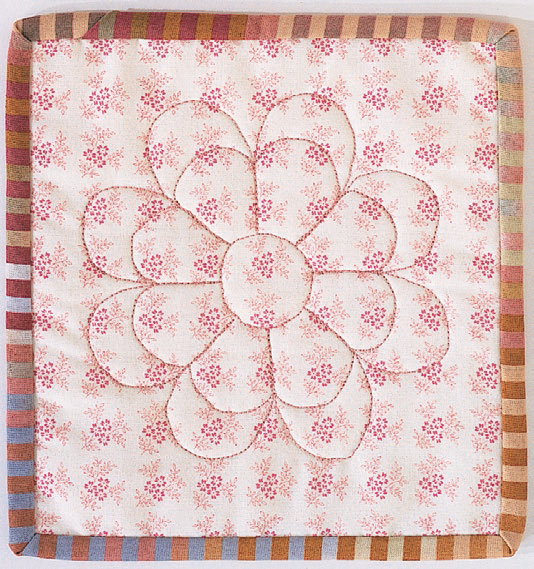
Quilting with pink thread.
Giveaway
Enter for a chance to win an ebook copy
-







